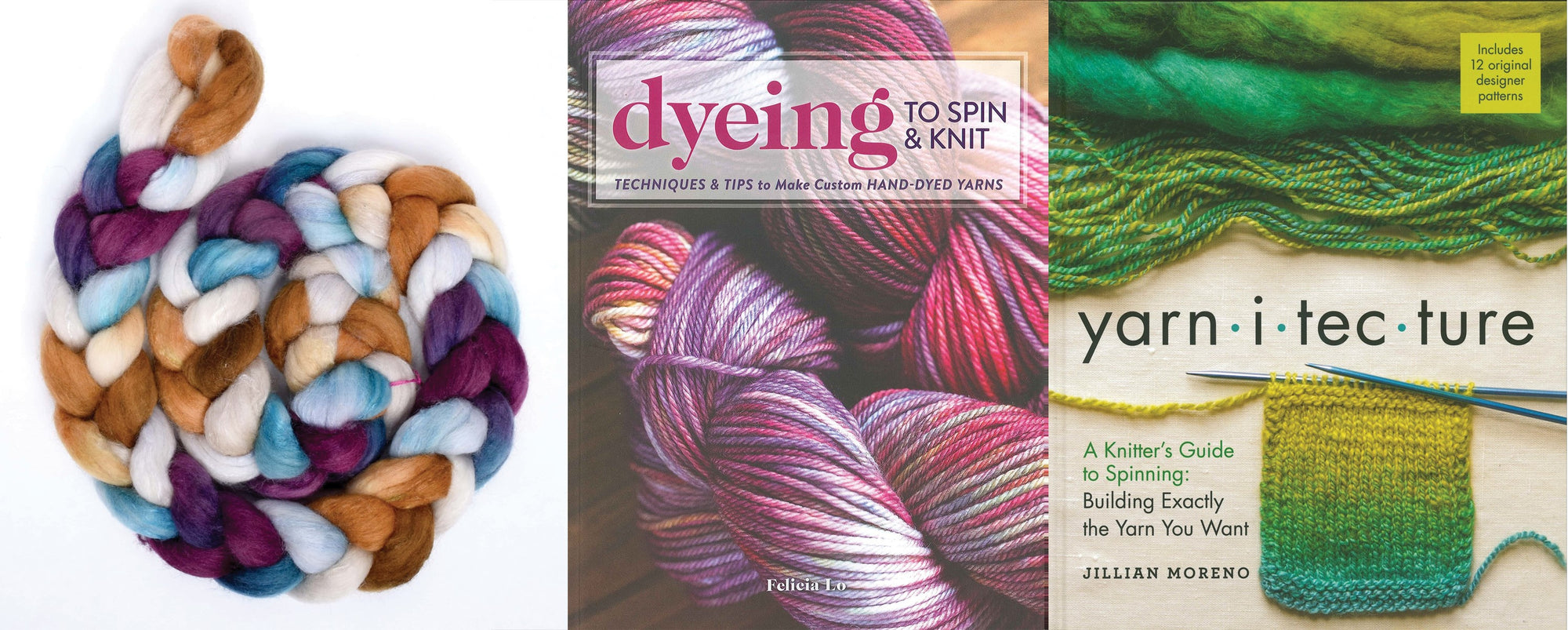Confident Spinning with Color: Learning My Lessons
By Deb Gerish
Have you ever fallen in love with a braid of hand-dyed fiber and then wondered what on earth to do next? I have experienced this phenomenon more times than I can count. Part of my paralysis came from lack of knowledge, and that's the easiest part to overcome. But I still lack confidence that my spinning choices will work.
Felicia Lo and Jillian Moreno have both written fabulous books (Dyeing to Spin and Knit and Yarnitecture) that I've been planning to work through. My confidence problem hasn't been so easy to solve until very recently, when the lessons Felicia and Jillian teach finally made their way into my heart as well as my brain. In this spin-along, I want to boost your confidence too by sharing these lessons.
What You'll Need
-
confidence
-
two braids of space-dyed fiber
-
spinning wheel—I used my Matchless
-
Yarnitecture
-
Dyeing to Spin and Knit
Directions
First lesson: It’s okay to play. You're not "wasting" a precious braid by experimenting with it. You can always find a use for a handspun skein.
Second lesson: Dyed braids need a different approach from undyed top or raw fiber. When I started spinning in 1996, I learned to let undyed fiber tell me what it wanted to be. I might have a particular knitting project in mind, or I might find a project to suit the yarn after it was all made. But color adds another dimension.
I've only just realized that I should plan my spinning for dyed braids more intentionally—my third and fourth lessons.
Third lesson: Intentional planning means beginning with the end in mind.
These days, I use handspun for knitting (until I can carve out time to explore weaving). In knitted or crocheted projects, multicolor yarn does best in simpler fabrics, where texture doesn't fight with or get lost in the changing colors. That means emphasizing horizontal lines instead of vertical ones: welts or stripes instead of cables, allover lace panels instead of tiny, intricate motifs; slip stitches in 1 color, such as linen stitch; stranded colorwork or 2-color slip stitch patterns; ombré.
Fourth lesson: Plan your handspun yarn’s color pattern by deciding how much you want to preserve or blend the braid’s colors.
There's a wide spectrum between wholly blended colors and wholly separate colors—you get to choose! In their books, Jillian and Felicia offer comprehensive discussions of spinning techniques and how they play with different aspects of a handspun yarn.
Fifth lesson: Add reference cards for color to your spinning journal. I want as much yardage as possible from a precious 4-ounce braid; I don't want to use up that fiber in sampling. Color reference cards let me sample with "nano" skeins of about 10 yards.
For me, sampling a hand-dyed braid happens in stages. There's skein sampling, where I evaluate color interaction within the yarn itself. Then there's fabric sampling, looking at the colors in a fabric swatch (in my case, knitted fabric). Color reference cards can help with both parts.
You may already know how to make a spinning journal with samples for different yarn weights, plies, and woolen/worsted drafting. Once you make a reference card for a 2-ply DK yarn, you don't have to waste time and fiber every time you want to reproduce that yarn.
Now, start building a similar collection for color techniques. Make reference cards from nano skeins, including lengths of the finished yarn and notes about how you prepped, spun, and plied the fiber. Now you've got ideas and records for future skein sampling. Add a knitted/crocheted/woven swatch, and you can easily plan how to use the yarn.
- As you're creating this collection of color reference cards, use every hand-dyed braid to learn—just like Jillian and Felicia did on their way to becoming color goddesses. How do the colors interact in the braid, in the skein, and in the fabric? Most importantly, do you like the results you're getting? That's the final test.
- Next time, I'll explain how I applied these lessons to braids of Barry's Jubilee.

